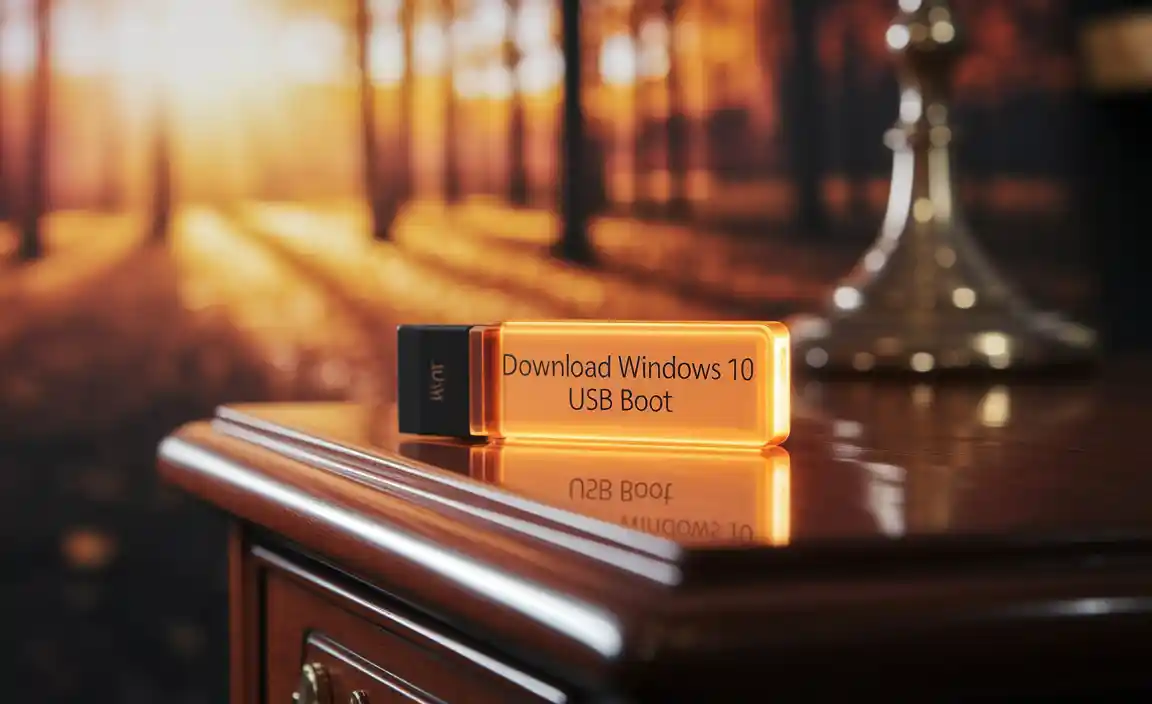Download Windows 10 for USB Boot: Easy Guide
Downloading Windows 10 to create a bootable USB drive is a straightforward process that empowers you to install, repair, or troubleshoot your operating system with ease. Whether you’re setting up a brand new PC, upgrading an older machine, or recovering from a significant system issue, a Windows 10 bootable USB is an essential tool in any tech-savvy individual’s arsenal. This guide will walk you through each step, ensuring you can download Windows 10 for USB boot efficiently and without hassle.

Before you begin, it’s crucial to have a few things in hand. Firstly, you’ll need a USB flash drive with a minimum capacity of 8GB. Ensure that any important data on the USB drive is backed up, as the creation process will format the drive and erase all its contents. Secondly, a stable internet connection is necessary to download the Windows 10 Media Creation Tool and the operating system image itself. Finally, you’ll require a computer running a supported version of Windows (Windows 7, 8, 8.1, or 10) with administrative privileges to execute the tool.
Getting Started: The Windows 10 Media Creation Tool
The official and most reliable method to download Windows 10 for USB boot involves using Microsoft’s Media Creation Tool. This free utility allows you to download the latest version of Windows 10 directly from Microsoft’s servers and create either a bootable USB drive or an ISO file, which can later be burned to a DVD.
To obtain the tool, navigate to the official Microsoft Windows 10 download page. You’ll find a prominent button labeled “Download tool now.” Click this button to download the Media Creation Tool executable file. Once the download is complete, locate the file (it will likely be named something like “MediaCreationToolxxxx.exe”) and double-click it to run. You may be prompted by User Account Control (UAC); click “Yes” to proceed.
Upon launching the tool, you’ll be presented with the license terms. Read through them and click “Accept” to continue. The tool will then begin preparing itself, which might take a moment.
Creating Your Bootable USB Drive
Once the Media Creation Tool is ready, you’ll see two primary options: “Upgrade this PC now” and “Create installation media (USB flash drive, DVD, or ISO file) for another PC.” For our purpose, you’ll want to select the second option: “Create installation media.” Click “Next.”
The next screen will ask you to select the language, architecture (32-bit or 64-bit), and edition of Windows 10. Usually, the recommended options for your current PC will be pre-selected. If you’re creating the USB for a different PC, you might need to uncheck the box that says “Use the recommended options for this PC” and manually choose your desired settings. For most modern computers, selecting 64-bit is the standard. If you’re unsure, consulting the system specifications of the target computer is advisable. Click “Next” once your selections are confirmed.
Now, you’ll be presented with the choice between creating an ISO file or a USB flash drive. To download Windows 10 for USB boot directly, select “USB flash drive.” Click “Next.”
The Media Creation Tool will then prompt you to insert your USB flash drive. Make sure your 8GB or larger USB drive is connected to your computer. The tool will detect the drive. Ensure you select the correct drive from the list, especially if you have multiple USB devices connected. Once selected, click “Next.”
The Download and Creation Process
With your USB drive selected, the Media Creation Tool will begin downloading the Windows 10 installation files. This process can take a significant amount of time, depending on your internet speed and the current size of the Windows 10 image. You’ll see a progress indicator showing the download status.
After the download is complete, the tool will automatically verify the files and then proceed to create the bootable USB drive. This involves formatting the USB drive and copying the necessary installation files onto it. Again, this process can take some time, so patience is key. Avoid unplugging the USB drive or shutting down your computer during this phase.
Once the process is finished, you’ll see a message indicating that your USB flash drive is ready. Click “Finish” to close the Media Creation Tool. Your bootable Windows 10 USB drive is now prepared and ready for use.
Using Your Bootable USB Drive
To use your newly created bootable USB drive, you’ll need to boot your target computer from it. This typically involves accessing your computer’s BIOS or UEFI settings during startup. The key to press varies by manufacturer but is often one of the following: `Delete`, `F2`, `F10`, `F12`, or `Esc`. Consult your computer’s manual or search online for your specific model if you’re unsure.
Once in the BIOS/UEFI settings, navigate to the boot order or boot priority section. You’ll need to change the order so that the USB drive is listed as the first boot device. Save your changes and exit the BIOS/UEFI. The computer will then restart and should boot from your Windows 10 USB drive, initiating the installation process. Follow the on-screen prompts to install or repair Windows 10.
Having a download Windows 10 for USB boot drive is an invaluable resource for any computer user. By following these steps, you can ensure you have a reliable installation medium at your fingertips whenever the need arises.
